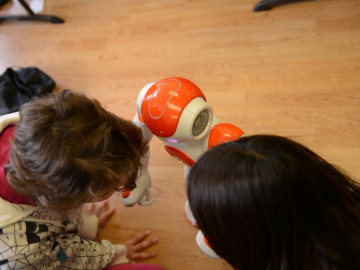This 2-day meeting aims to discuss the James Webb Space Telescope groundbreaking results for galaxy formation studies and how to fully unlock the potential of GREX-PLUS wide-field imaging surveys in the mid-2030s.
Exploring the early Universe is one of the major goals of modern astronomy and astrophysics. The James Webb Space Telescope (JWST) is now routinely providing a wealth of innovative observations, including the discovery of bright star-forming galaxies beyond the cosmological redshift of z=10, an unexpectedly large population of active galactic nuclei powered by supermassive blackholes, and quiescent galaxies even within the first 1 Gyr of the cosmic time. Although the JWST has super high sensitivity, its field-of-view is still too narrow to conduct >>1 degree2 imaging surveys that require finding rare, massive, bright galaxies in the early Universe. The European Euclid satellite is now conducting its super wide-field surveys, but it is limited to a wavelength less than 2 micron. NASA’s Roman telescope to be launched in 2026 also has the same wavelength limitation. Since the Lyman alpha break comes to >2 micron for galaxies at z>15, when the most exciting event, the first galaxy formation happened. The Japanese space telescope concept, GREX-PLUS (Galaxy Reionization EXplorer and PLanetary Universe Spectrometer) will provide the unique capability of wide-field imaging at a wavelength range of 2 to 8 micron in the mid-2030s.
The programme will include 12 presentations by speakers from Japan, EU, UK and US: Profs Rebecca BOWLER, Jodrell Bank Centre for Astrophysics, University of Manchester; Pratika DAYAL,
Kapteyn Astronomical Institute, The University of Groningen; Eiichi EGAMI, Steward Observatory, University of Arizona; Andrea FERRARA, Scuola Normale Superiore; Akio INOUE, Waseda University, Jorryt MATTHEE, Institute of Science and Technology Austria (ISTA); Takao NAKAGAWA, ISAS/JAXA; Pascal OESCH, Department of Astronomy, University of Geneva; Emanuele PACE, Dipartimento di Fisica e Astronomia, Università degli Studi di Firenze; Laura PENTERICCI, INAF, Osservatorio Astronomico di Roma; Sirio BELLI, Department of Physics and Astronomy “Augusto Righi”, University of Bologna; Yuma SUGAHARA, Waseda University; Sune TOFT, Cosmic Dawn Center (DAWN), Niels Bohr Institute, University of Copenhagen; Darach WATSON, Cosmic Dawn Center (DAWN), Niels Bohr Institute, University of Copenhagen; Issei YAMAMURA, ISAS/JAXA; Erik ZACKRISSON, Department of Physics and Astronomy, Uppsala University






